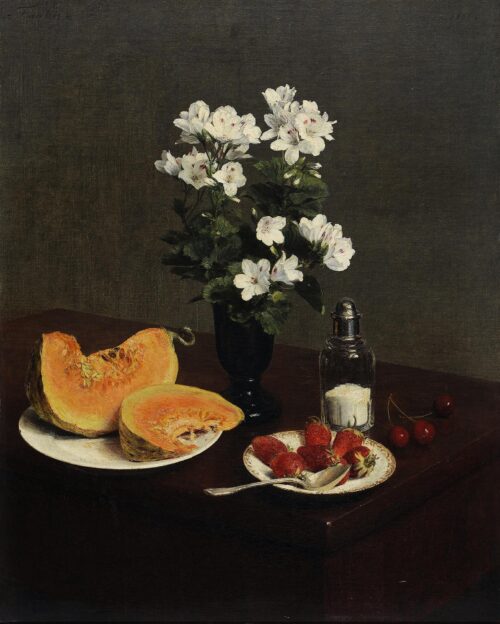| Περιγραφή τεκμηρίου: |
Ιn contrast to his Impressionist friends, Fantin-Latour evinced no inclination to work in the open air; he was a painter of the atelier. His early still life works, from the 1860s, were austere depictions of fruit and flowers. He frequently, as in the present painting, placed the table at an oblique angle, cutting off the corners, thus making the image more dynamic and worked it in a way that it was viewed from a slightly elevated angle. In the still life at the National Gallery, which is made up of flowers, most probably pelargoniums (flowers from the geranium family) and summer fruit, the objects are arranged lengthwise along two parallel lines formed in relationship to the table's far corners; the vase placed behind the fruit is, in reality, the composition's vertical axis. The white "spots" that represent the flowers, the plates and the sugar are set in contrast to the vivid colors of the fruit, the dark tone of the wood set against the tepid grey background. The melon sliced open and the fully-ripened strawberries arouse the sense of taste while the gleaming cherries, apparently freshly picked, and the sugar, encourage one to sample the fruit. The simplicity of this still life, austere but at the same time provocative, in terms of the sense of taste, is an example of a subtle quest, of an admirable blending of material, painting surface and shadow. The black vase and the table made of wood, with an exceptionally glossy polish, is often seen in this painter's still life works with fruit and flowers which he did the same year (National Gallery, Washington D.C. and The Metropolitan Museum of New York).
|
